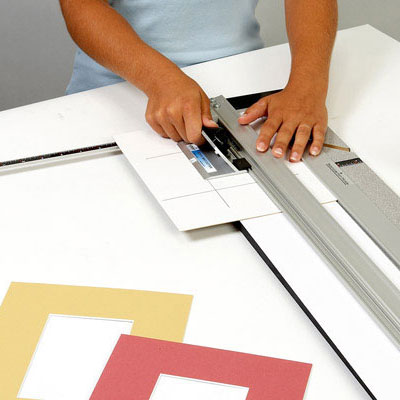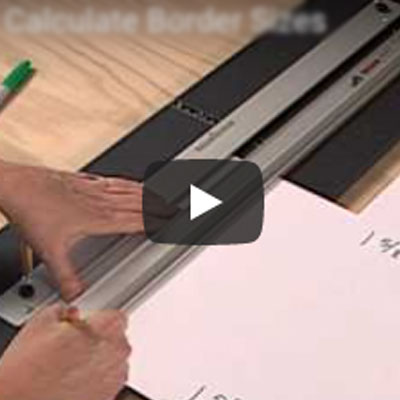- Making the Most of a 32 x 40 Sheet
- Trimming Mat Board to Size
- Trimming Mat Board to Size with Straight Edge
- Trimming Mat Board to Size with Compact
- Trimming Mat Board to Size with Simplex
- Mat Cutting
- Cutting Single Mat Using a Straight Edge
- Cutting a Single Mat With a Simplex-Basics
- Cutting a single mat with a simplex-detailed
- Cutting a double mat
- Cutting a double mat- detailed professional version
- The professional framers secret for cutting a double mat
- How to measure and cut a double mat,
- Cutting a stepped corner mat – basics
- Cutting stepped corner mats – detailed
- Offset (stepped) corner mat
- Slip sheets
- The importance of using a slip sheet when cutting
- The importance of using a backing sheet
- Why am I getting a ragged cut?
- How to avoid rough or ragged edges when cutting mats
- Dealing with inconsistencies in the bevel edges
- Adjusting your mat cutter for proper blade depth
- The importance of proper blade depth
- Why am I getting a hook in the corners or curve in the bevel cut?
- How come I don't cut all the way through the mat board?
- How to conquer overcuts and undercuts?
- Dealing with overcuts and undercuts
- Why am I getting overcuts in the corners?
- Why are my mats not coming out square?
- Why is my bevel cut going the wrong way?
- How to cut left handed
- How to cut a 40" sheet of mat board on the 32" compact mat cutter
- Is using production stops the fool proof way to get perfect mats?
- Tips for working with production stops on your mat cutter
- Basic mat cutter maintenance
- Mounting your artwork
- Grappling with conservation and archival mounting concerns
- Supporting Artwork
- Hinge mounting T, V and S methods
- A simple method to a T-hinge mount
- Trapping methods
- Permanent mounting
- Wet mounting
- Pressure sensitive adhesive mounting
- How to mount artwork using positionable mounting adhesive (PMA)
- Spray adhesives
CUTTING AN OVAL INLAY MAT
This example will make an 8" x 10" oval opening with a 1" inlay.
1. Trim two pieces of 11" x 14" matboard.
White will be the top mat.
Black will be the inlay mat.
2. Draw two lines with pencil on the face of the White mat—one vertical, one horizontal—which intersect at right angles in the precise position where the center of the oval is desired.
3. Set the adjustable slide scale at 2".
4. Set the scale arm to 9".
5. Position the base on the front of the White mat so that the indicator notches line up with the intersecting lines. Press the base down and cut an oval. (See Cutting an Oval). IMPORTANT: Do not make any adjustments to the scale arm. It is essential that the dimensions for the oval remain exactly the same for the next cut.
6. Center the base on the face of the Black mat. Press the base down and cut an oval. Keep the fallout.
7. Adjust the scale arm to 8".
8. In the fallout piece of the Black mat there will be four holes which were made by the base pins. Position the base in the holes, press down and cut an oval.
9. Take the resulting ring and fit it flush into the window opening of the White mat. Tape the pieces together on the back.












